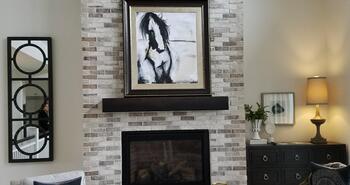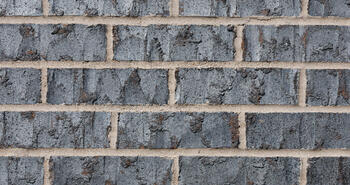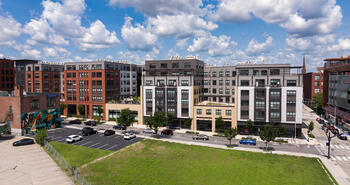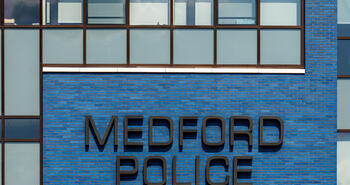Favorites

Silverbrook

Thin Tech Elite

Midtown Ironspot Smooth, Ebonite Smooth

Black Pearl Smooth, Malmö, 200 Flashed Matt

Custom Klaycoat, Sloped Stretcher [Custom]
Drupal\twig_tweak\TwigTweakExtension::imageStyleFilter() (Line: 52)
__TwigTemplate_6be8baeb49eaec2a465ef9cc70d22140->doDisplay() (Line: 387)
Twig\Template->yield() (Line: 47)
__TwigTemplate_93b0ac9393484fe9c83a2e3a20921eff->doDisplay() (Line: 387)
Twig\Template->yield() (Line: 343)
Twig\Template->display() (Line: 358)
Twig\Template->render() (Line: 35)
Twig\TemplateWrapper->render() (Line: 33)
twig_render_template() (Line: 348)
Drupal\Core\Theme\ThemeManager->render() (Line: 491)
Drupal\Core\Render\Renderer->doRender() (Line: 248)
Drupal\Core\Render\Renderer->render() (Line: 1204)
Drupal\views\Plugin\views\field\FieldPluginBase->advancedRender() (Line: 238)
template_preprocess_views_view_field()
call_user_func_array() (Line: 261)
Drupal\Core\Theme\ThemeManager->render() (Line: 491)
Drupal\Core\Render\Renderer->doRender() (Line: 248)
Drupal\Core\Render\Renderer->render() (Line: 1796)
Drupal\views\Plugin\views\field\FieldPluginBase->theme() (Line: 769)
Drupal\views\Plugin\views\style\StylePluginBase->elementPreRenderRow()
call_user_func_array() (Line: 113)
Drupal\Core\Render\Renderer->doTrustedCallback() (Line: 870)
Drupal\Core\Render\Renderer->doCallback() (Line: 432)
Drupal\Core\Render\Renderer->doRender() (Line: 248)
Drupal\Core\Render\Renderer->render() (Line: 708)
Drupal\views\Plugin\views\style\StylePluginBase->renderFields() (Line: 574)
Drupal\views\Plugin\views\style\StylePluginBase->renderGrouping() (Line: 462)
Drupal\views\Plugin\views\style\StylePluginBase->render() (Line: 2177)
Drupal\views\Plugin\views\display\DisplayPluginBase->render() (Line: 1593)
Drupal\views\ViewExecutable->render() (Line: 201)
Drupal\views\Plugin\views\display\Page->execute() (Line: 1690)
Drupal\views\ViewExecutable->executeDisplay() (Line: 81)
Drupal\views\Element\View::preRenderViewElement()
call_user_func_array() (Line: 113)
Drupal\Core\Render\Renderer->doTrustedCallback() (Line: 870)
Drupal\Core\Render\Renderer->doCallback() (Line: 432)
Drupal\Core\Render\Renderer->doRender() (Line: 504)
Drupal\Core\Render\Renderer->doRender() (Line: 248)
Drupal\Core\Render\Renderer->render() (Line: 484)
Drupal\Core\Template\TwigExtension->escapeFilter() (Line: 84)
__TwigTemplate_7e5c25355d74b4d06aa29ae3139fd8c7->doDisplay() (Line: 387)
Twig\Template->yield() (Line: 343)
Twig\Template->display() (Line: 358)
Twig\Template->render() (Line: 35)
Twig\TemplateWrapper->render() (Line: 33)
twig_render_template() (Line: 348)
Drupal\Core\Theme\ThemeManager->render() (Line: 491)
Drupal\Core\Render\Renderer->doRender() (Line: 504)
Drupal\Core\Render\Renderer->doRender() (Line: 248)
Drupal\Core\Render\Renderer->render() (Line: 484)
Drupal\Core\Template\TwigExtension->escapeFilter() (Line: 84)
__TwigTemplate_57f4cfbe25d1011482bc3aa76fc30547->block_content() (Line: 431)
Twig\Template->yieldBlock() (Line: 68)
__TwigTemplate_57f4cfbe25d1011482bc3aa76fc30547->block_paragraph() (Line: 431)
Twig\Template->yieldBlock() (Line: 51)
__TwigTemplate_57f4cfbe25d1011482bc3aa76fc30547->doDisplay() (Line: 387)
Twig\Template->yield() (Line: 343)
Twig\Template->display() (Line: 358)
Twig\Template->render() (Line: 35)
Twig\TemplateWrapper->render() (Line: 33)
twig_render_template() (Line: 348)
Drupal\Core\Theme\ThemeManager->render() (Line: 491)
Drupal\Core\Render\Renderer->doRender() (Line: 248)
Drupal\Core\Render\Renderer->render() (Line: 484)
Drupal\Core\Template\TwigExtension->escapeFilter() (Line: 64)
__TwigTemplate_7e5c25355d74b4d06aa29ae3139fd8c7->doDisplay() (Line: 387)
Twig\Template->yield() (Line: 343)
Twig\Template->display() (Line: 358)
Twig\Template->render() (Line: 35)
Twig\TemplateWrapper->render() (Line: 33)
twig_render_template() (Line: 348)
Drupal\Core\Theme\ThemeManager->render() (Line: 491)
Drupal\Core\Render\Renderer->doRender() (Line: 504)
Drupal\Core\Render\Renderer->doRender() (Line: 248)
Drupal\Core\Render\Renderer->render() (Line: 484)
Drupal\Core\Template\TwigExtension->escapeFilter() (Line: 105)
__TwigTemplate_1054f55390fb32f6fc0c7e808c9360be->doDisplay() (Line: 387)
Twig\Template->yield() (Line: 343)
Twig\Template->display() (Line: 358)
Twig\Template->render() (Line: 35)
Twig\TemplateWrapper->render() (Line: 33)
twig_render_template() (Line: 348)
Drupal\Core\Theme\ThemeManager->render() (Line: 491)
Drupal\Core\Render\Renderer->doRender() (Line: 248)
Drupal\Core\Render\Renderer->render() (Line: 238)
Drupal\Core\Render\MainContent\HtmlRenderer->Drupal\Core\Render\MainContent\{closure}() (Line: 638)
Drupal\Core\Render\Renderer->executeInRenderContext() (Line: 231)
Drupal\Core\Render\MainContent\HtmlRenderer->prepare() (Line: 128)
Drupal\Core\Render\MainContent\HtmlRenderer->renderResponse() (Line: 90)
Drupal\Core\EventSubscriber\MainContentViewSubscriber->onViewRenderArray()
call_user_func() (Line: 111)
Drupal\Component\EventDispatcher\ContainerAwareEventDispatcher->dispatch() (Line: 186)
Symfony\Component\HttpKernel\HttpKernel->handleRaw() (Line: 76)
Symfony\Component\HttpKernel\HttpKernel->handle() (Line: 53)
Drupal\Core\StackMiddleware\Session->handle() (Line: 48)
Drupal\Core\StackMiddleware\KernelPreHandle->handle() (Line: 28)
Drupal\Core\StackMiddleware\ContentLength->handle() (Line: 32)
Drupal\big_pipe\StackMiddleware\ContentLength->handle() (Line: 201)
Drupal\page_cache\StackMiddleware\PageCache->fetch() (Line: 138)
Drupal\page_cache\StackMiddleware\PageCache->lookup() (Line: 87)
Drupal\page_cache\StackMiddleware\PageCache->handle() (Line: 48)
Drupal\Core\StackMiddleware\ReverseProxyMiddleware->handle() (Line: 51)
Drupal\Core\StackMiddleware\NegotiationMiddleware->handle() (Line: 36)
Drupal\Core\StackMiddleware\AjaxPageState->handle() (Line: 51)
Drupal\Core\StackMiddleware\StackedHttpKernel->handle() (Line: 741)
Drupal\Core\DrupalKernel->handle() (Line: 19)
Drupal\twig_tweak\TwigTweakExtension::imageStyleFilter() (Line: 52)
__TwigTemplate_6be8baeb49eaec2a465ef9cc70d22140->doDisplay() (Line: 387)
Twig\Template->yield() (Line: 47)
__TwigTemplate_93b0ac9393484fe9c83a2e3a20921eff->doDisplay() (Line: 387)
Twig\Template->yield() (Line: 343)
Twig\Template->display() (Line: 358)
Twig\Template->render() (Line: 35)
Twig\TemplateWrapper->render() (Line: 33)
twig_render_template() (Line: 348)
Drupal\Core\Theme\ThemeManager->render() (Line: 491)
Drupal\Core\Render\Renderer->doRender() (Line: 248)
Drupal\Core\Render\Renderer->render() (Line: 1204)
Drupal\views\Plugin\views\field\FieldPluginBase->advancedRender() (Line: 238)
template_preprocess_views_view_field()
call_user_func_array() (Line: 261)
Drupal\Core\Theme\ThemeManager->render() (Line: 491)
Drupal\Core\Render\Renderer->doRender() (Line: 248)
Drupal\Core\Render\Renderer->render() (Line: 1796)
Drupal\views\Plugin\views\field\FieldPluginBase->theme() (Line: 769)
Drupal\views\Plugin\views\style\StylePluginBase->elementPreRenderRow()
call_user_func_array() (Line: 113)
Drupal\Core\Render\Renderer->doTrustedCallback() (Line: 870)
Drupal\Core\Render\Renderer->doCallback() (Line: 432)
Drupal\Core\Render\Renderer->doRender() (Line: 248)
Drupal\Core\Render\Renderer->render() (Line: 708)
Drupal\views\Plugin\views\style\StylePluginBase->renderFields() (Line: 574)
Drupal\views\Plugin\views\style\StylePluginBase->renderGrouping() (Line: 462)
Drupal\views\Plugin\views\style\StylePluginBase->render() (Line: 2177)
Drupal\views\Plugin\views\display\DisplayPluginBase->render() (Line: 1593)
Drupal\views\ViewExecutable->render() (Line: 201)
Drupal\views\Plugin\views\display\Page->execute() (Line: 1690)
Drupal\views\ViewExecutable->executeDisplay() (Line: 81)
Drupal\views\Element\View::preRenderViewElement()
call_user_func_array() (Line: 113)
Drupal\Core\Render\Renderer->doTrustedCallback() (Line: 870)
Drupal\Core\Render\Renderer->doCallback() (Line: 432)
Drupal\Core\Render\Renderer->doRender() (Line: 504)
Drupal\Core\Render\Renderer->doRender() (Line: 248)
Drupal\Core\Render\Renderer->render() (Line: 484)
Drupal\Core\Template\TwigExtension->escapeFilter() (Line: 84)
__TwigTemplate_7e5c25355d74b4d06aa29ae3139fd8c7->doDisplay() (Line: 387)
Twig\Template->yield() (Line: 343)
Twig\Template->display() (Line: 358)
Twig\Template->render() (Line: 35)
Twig\TemplateWrapper->render() (Line: 33)
twig_render_template() (Line: 348)
Drupal\Core\Theme\ThemeManager->render() (Line: 491)
Drupal\Core\Render\Renderer->doRender() (Line: 504)
Drupal\Core\Render\Renderer->doRender() (Line: 248)
Drupal\Core\Render\Renderer->render() (Line: 484)
Drupal\Core\Template\TwigExtension->escapeFilter() (Line: 84)
__TwigTemplate_57f4cfbe25d1011482bc3aa76fc30547->block_content() (Line: 431)
Twig\Template->yieldBlock() (Line: 68)
__TwigTemplate_57f4cfbe25d1011482bc3aa76fc30547->block_paragraph() (Line: 431)
Twig\Template->yieldBlock() (Line: 51)
__TwigTemplate_57f4cfbe25d1011482bc3aa76fc30547->doDisplay() (Line: 387)
Twig\Template->yield() (Line: 343)
Twig\Template->display() (Line: 358)
Twig\Template->render() (Line: 35)
Twig\TemplateWrapper->render() (Line: 33)
twig_render_template() (Line: 348)
Drupal\Core\Theme\ThemeManager->render() (Line: 491)
Drupal\Core\Render\Renderer->doRender() (Line: 248)
Drupal\Core\Render\Renderer->render() (Line: 484)
Drupal\Core\Template\TwigExtension->escapeFilter() (Line: 64)
__TwigTemplate_7e5c25355d74b4d06aa29ae3139fd8c7->doDisplay() (Line: 387)
Twig\Template->yield() (Line: 343)
Twig\Template->display() (Line: 358)
Twig\Template->render() (Line: 35)
Twig\TemplateWrapper->render() (Line: 33)
twig_render_template() (Line: 348)
Drupal\Core\Theme\ThemeManager->render() (Line: 491)
Drupal\Core\Render\Renderer->doRender() (Line: 504)
Drupal\Core\Render\Renderer->doRender() (Line: 248)
Drupal\Core\Render\Renderer->render() (Line: 484)
Drupal\Core\Template\TwigExtension->escapeFilter() (Line: 105)
__TwigTemplate_1054f55390fb32f6fc0c7e808c9360be->doDisplay() (Line: 387)
Twig\Template->yield() (Line: 343)
Twig\Template->display() (Line: 358)
Twig\Template->render() (Line: 35)
Twig\TemplateWrapper->render() (Line: 33)
twig_render_template() (Line: 348)
Drupal\Core\Theme\ThemeManager->render() (Line: 491)
Drupal\Core\Render\Renderer->doRender() (Line: 248)
Drupal\Core\Render\Renderer->render() (Line: 238)
Drupal\Core\Render\MainContent\HtmlRenderer->Drupal\Core\Render\MainContent\{closure}() (Line: 638)
Drupal\Core\Render\Renderer->executeInRenderContext() (Line: 231)
Drupal\Core\Render\MainContent\HtmlRenderer->prepare() (Line: 128)
Drupal\Core\Render\MainContent\HtmlRenderer->renderResponse() (Line: 90)
Drupal\Core\EventSubscriber\MainContentViewSubscriber->onViewRenderArray()
call_user_func() (Line: 111)
Drupal\Component\EventDispatcher\ContainerAwareEventDispatcher->dispatch() (Line: 186)
Symfony\Component\HttpKernel\HttpKernel->handleRaw() (Line: 76)
Symfony\Component\HttpKernel\HttpKernel->handle() (Line: 53)
Drupal\Core\StackMiddleware\Session->handle() (Line: 48)
Drupal\Core\StackMiddleware\KernelPreHandle->handle() (Line: 28)
Drupal\Core\StackMiddleware\ContentLength->handle() (Line: 32)
Drupal\big_pipe\StackMiddleware\ContentLength->handle() (Line: 201)
Drupal\page_cache\StackMiddleware\PageCache->fetch() (Line: 138)
Drupal\page_cache\StackMiddleware\PageCache->lookup() (Line: 87)
Drupal\page_cache\StackMiddleware\PageCache->handle() (Line: 48)
Drupal\Core\StackMiddleware\ReverseProxyMiddleware->handle() (Line: 51)
Drupal\Core\StackMiddleware\NegotiationMiddleware->handle() (Line: 36)
Drupal\Core\StackMiddleware\AjaxPageState->handle() (Line: 51)
Drupal\Core\StackMiddleware\StackedHttpKernel->handle() (Line: 741)
Drupal\Core\DrupalKernel->handle() (Line: 19)
Drupal\twig_tweak\TwigTweakExtension::imageStyleFilter() (Line: 52)
__TwigTemplate_6be8baeb49eaec2a465ef9cc70d22140->doDisplay() (Line: 387)
Twig\Template->yield() (Line: 47)
__TwigTemplate_93b0ac9393484fe9c83a2e3a20921eff->doDisplay() (Line: 387)
Twig\Template->yield() (Line: 343)
Twig\Template->display() (Line: 358)
Twig\Template->render() (Line: 35)
Twig\TemplateWrapper->render() (Line: 33)
twig_render_template() (Line: 348)
Drupal\Core\Theme\ThemeManager->render() (Line: 491)
Drupal\Core\Render\Renderer->doRender() (Line: 248)
Drupal\Core\Render\Renderer->render() (Line: 1204)
Drupal\views\Plugin\views\field\FieldPluginBase->advancedRender() (Line: 238)
template_preprocess_views_view_field()
call_user_func_array() (Line: 261)
Drupal\Core\Theme\ThemeManager->render() (Line: 491)
Drupal\Core\Render\Renderer->doRender() (Line: 248)
Drupal\Core\Render\Renderer->render() (Line: 1796)
Drupal\views\Plugin\views\field\FieldPluginBase->theme() (Line: 769)
Drupal\views\Plugin\views\style\StylePluginBase->elementPreRenderRow()
call_user_func_array() (Line: 113)
Drupal\Core\Render\Renderer->doTrustedCallback() (Line: 870)
Drupal\Core\Render\Renderer->doCallback() (Line: 432)
Drupal\Core\Render\Renderer->doRender() (Line: 248)
Drupal\Core\Render\Renderer->render() (Line: 708)
Drupal\views\Plugin\views\style\StylePluginBase->renderFields() (Line: 574)
Drupal\views\Plugin\views\style\StylePluginBase->renderGrouping() (Line: 462)
Drupal\views\Plugin\views\style\StylePluginBase->render() (Line: 2177)
Drupal\views\Plugin\views\display\DisplayPluginBase->render() (Line: 1593)
Drupal\views\ViewExecutable->render() (Line: 201)
Drupal\views\Plugin\views\display\Page->execute() (Line: 1690)
Drupal\views\ViewExecutable->executeDisplay() (Line: 81)
Drupal\views\Element\View::preRenderViewElement()
call_user_func_array() (Line: 113)
Drupal\Core\Render\Renderer->doTrustedCallback() (Line: 870)
Drupal\Core\Render\Renderer->doCallback() (Line: 432)
Drupal\Core\Render\Renderer->doRender() (Line: 504)
Drupal\Core\Render\Renderer->doRender() (Line: 248)
Drupal\Core\Render\Renderer->render() (Line: 484)
Drupal\Core\Template\TwigExtension->escapeFilter() (Line: 84)
__TwigTemplate_7e5c25355d74b4d06aa29ae3139fd8c7->doDisplay() (Line: 387)
Twig\Template->yield() (Line: 343)
Twig\Template->display() (Line: 358)
Twig\Template->render() (Line: 35)
Twig\TemplateWrapper->render() (Line: 33)
twig_render_template() (Line: 348)
Drupal\Core\Theme\ThemeManager->render() (Line: 491)
Drupal\Core\Render\Renderer->doRender() (Line: 504)
Drupal\Core\Render\Renderer->doRender() (Line: 248)
Drupal\Core\Render\Renderer->render() (Line: 484)
Drupal\Core\Template\TwigExtension->escapeFilter() (Line: 84)
__TwigTemplate_57f4cfbe25d1011482bc3aa76fc30547->block_content() (Line: 431)
Twig\Template->yieldBlock() (Line: 68)
__TwigTemplate_57f4cfbe25d1011482bc3aa76fc30547->block_paragraph() (Line: 431)
Twig\Template->yieldBlock() (Line: 51)
__TwigTemplate_57f4cfbe25d1011482bc3aa76fc30547->doDisplay() (Line: 387)
Twig\Template->yield() (Line: 343)
Twig\Template->display() (Line: 358)
Twig\Template->render() (Line: 35)
Twig\TemplateWrapper->render() (Line: 33)
twig_render_template() (Line: 348)
Drupal\Core\Theme\ThemeManager->render() (Line: 491)
Drupal\Core\Render\Renderer->doRender() (Line: 248)
Drupal\Core\Render\Renderer->render() (Line: 484)
Drupal\Core\Template\TwigExtension->escapeFilter() (Line: 64)
__TwigTemplate_7e5c25355d74b4d06aa29ae3139fd8c7->doDisplay() (Line: 387)
Twig\Template->yield() (Line: 343)
Twig\Template->display() (Line: 358)
Twig\Template->render() (Line: 35)
Twig\TemplateWrapper->render() (Line: 33)
twig_render_template() (Line: 348)
Drupal\Core\Theme\ThemeManager->render() (Line: 491)
Drupal\Core\Render\Renderer->doRender() (Line: 504)
Drupal\Core\Render\Renderer->doRender() (Line: 248)
Drupal\Core\Render\Renderer->render() (Line: 484)
Drupal\Core\Template\TwigExtension->escapeFilter() (Line: 105)
__TwigTemplate_1054f55390fb32f6fc0c7e808c9360be->doDisplay() (Line: 387)
Twig\Template->yield() (Line: 343)
Twig\Template->display() (Line: 358)
Twig\Template->render() (Line: 35)
Twig\TemplateWrapper->render() (Line: 33)
twig_render_template() (Line: 348)
Drupal\Core\Theme\ThemeManager->render() (Line: 491)
Drupal\Core\Render\Renderer->doRender() (Line: 248)
Drupal\Core\Render\Renderer->render() (Line: 238)
Drupal\Core\Render\MainContent\HtmlRenderer->Drupal\Core\Render\MainContent\{closure}() (Line: 638)
Drupal\Core\Render\Renderer->executeInRenderContext() (Line: 231)
Drupal\Core\Render\MainContent\HtmlRenderer->prepare() (Line: 128)
Drupal\Core\Render\MainContent\HtmlRenderer->renderResponse() (Line: 90)
Drupal\Core\EventSubscriber\MainContentViewSubscriber->onViewRenderArray()
call_user_func() (Line: 111)
Drupal\Component\EventDispatcher\ContainerAwareEventDispatcher->dispatch() (Line: 186)
Symfony\Component\HttpKernel\HttpKernel->handleRaw() (Line: 76)
Symfony\Component\HttpKernel\HttpKernel->handle() (Line: 53)
Drupal\Core\StackMiddleware\Session->handle() (Line: 48)
Drupal\Core\StackMiddleware\KernelPreHandle->handle() (Line: 28)
Drupal\Core\StackMiddleware\ContentLength->handle() (Line: 32)
Drupal\big_pipe\StackMiddleware\ContentLength->handle() (Line: 201)
Drupal\page_cache\StackMiddleware\PageCache->fetch() (Line: 138)
Drupal\page_cache\StackMiddleware\PageCache->lookup() (Line: 87)
Drupal\page_cache\StackMiddleware\PageCache->handle() (Line: 48)
Drupal\Core\StackMiddleware\ReverseProxyMiddleware->handle() (Line: 51)
Drupal\Core\StackMiddleware\NegotiationMiddleware->handle() (Line: 36)
Drupal\Core\StackMiddleware\AjaxPageState->handle() (Line: 51)
Drupal\Core\StackMiddleware\StackedHttpKernel->handle() (Line: 741)
Drupal\Core\DrupalKernel->handle() (Line: 19)
Drupal\twig_tweak\TwigTweakExtension::imageStyleFilter() (Line: 52)
__TwigTemplate_6be8baeb49eaec2a465ef9cc70d22140->doDisplay() (Line: 387)
Twig\Template->yield() (Line: 47)
__TwigTemplate_93b0ac9393484fe9c83a2e3a20921eff->doDisplay() (Line: 387)
Twig\Template->yield() (Line: 343)
Twig\Template->display() (Line: 358)
Twig\Template->render() (Line: 35)
Twig\TemplateWrapper->render() (Line: 33)
twig_render_template() (Line: 348)
Drupal\Core\Theme\ThemeManager->render() (Line: 491)
Drupal\Core\Render\Renderer->doRender() (Line: 248)
Drupal\Core\Render\Renderer->render() (Line: 1204)
Drupal\views\Plugin\views\field\FieldPluginBase->advancedRender() (Line: 238)
template_preprocess_views_view_field()
call_user_func_array() (Line: 261)
Drupal\Core\Theme\ThemeManager->render() (Line: 491)
Drupal\Core\Render\Renderer->doRender() (Line: 248)
Drupal\Core\Render\Renderer->render() (Line: 1796)
Drupal\views\Plugin\views\field\FieldPluginBase->theme() (Line: 769)
Drupal\views\Plugin\views\style\StylePluginBase->elementPreRenderRow()
call_user_func_array() (Line: 113)
Drupal\Core\Render\Renderer->doTrustedCallback() (Line: 870)
Drupal\Core\Render\Renderer->doCallback() (Line: 432)
Drupal\Core\Render\Renderer->doRender() (Line: 248)
Drupal\Core\Render\Renderer->render() (Line: 708)
Drupal\views\Plugin\views\style\StylePluginBase->renderFields() (Line: 574)
Drupal\views\Plugin\views\style\StylePluginBase->renderGrouping() (Line: 462)
Drupal\views\Plugin\views\style\StylePluginBase->render() (Line: 2177)
Drupal\views\Plugin\views\display\DisplayPluginBase->render() (Line: 1593)
Drupal\views\ViewExecutable->render() (Line: 201)
Drupal\views\Plugin\views\display\Page->execute() (Line: 1690)
Drupal\views\ViewExecutable->executeDisplay() (Line: 81)
Drupal\views\Element\View::preRenderViewElement()
call_user_func_array() (Line: 113)
Drupal\Core\Render\Renderer->doTrustedCallback() (Line: 870)
Drupal\Core\Render\Renderer->doCallback() (Line: 432)
Drupal\Core\Render\Renderer->doRender() (Line: 504)
Drupal\Core\Render\Renderer->doRender() (Line: 248)
Drupal\Core\Render\Renderer->render() (Line: 484)
Drupal\Core\Template\TwigExtension->escapeFilter() (Line: 84)
__TwigTemplate_7e5c25355d74b4d06aa29ae3139fd8c7->doDisplay() (Line: 387)
Twig\Template->yield() (Line: 343)
Twig\Template->display() (Line: 358)
Twig\Template->render() (Line: 35)
Twig\TemplateWrapper->render() (Line: 33)
twig_render_template() (Line: 348)
Drupal\Core\Theme\ThemeManager->render() (Line: 491)
Drupal\Core\Render\Renderer->doRender() (Line: 504)
Drupal\Core\Render\Renderer->doRender() (Line: 248)
Drupal\Core\Render\Renderer->render() (Line: 484)
Drupal\Core\Template\TwigExtension->escapeFilter() (Line: 84)
__TwigTemplate_57f4cfbe25d1011482bc3aa76fc30547->block_content() (Line: 431)
Twig\Template->yieldBlock() (Line: 68)
__TwigTemplate_57f4cfbe25d1011482bc3aa76fc30547->block_paragraph() (Line: 431)
Twig\Template->yieldBlock() (Line: 51)
__TwigTemplate_57f4cfbe25d1011482bc3aa76fc30547->doDisplay() (Line: 387)
Twig\Template->yield() (Line: 343)
Twig\Template->display() (Line: 358)
Twig\Template->render() (Line: 35)
Twig\TemplateWrapper->render() (Line: 33)
twig_render_template() (Line: 348)
Drupal\Core\Theme\ThemeManager->render() (Line: 491)
Drupal\Core\Render\Renderer->doRender() (Line: 248)
Drupal\Core\Render\Renderer->render() (Line: 484)
Drupal\Core\Template\TwigExtension->escapeFilter() (Line: 64)
__TwigTemplate_7e5c25355d74b4d06aa29ae3139fd8c7->doDisplay() (Line: 387)
Twig\Template->yield() (Line: 343)
Twig\Template->display() (Line: 358)
Twig\Template->render() (Line: 35)
Twig\TemplateWrapper->render() (Line: 33)
twig_render_template() (Line: 348)
Drupal\Core\Theme\ThemeManager->render() (Line: 491)
Drupal\Core\Render\Renderer->doRender() (Line: 504)
Drupal\Core\Render\Renderer->doRender() (Line: 248)
Drupal\Core\Render\Renderer->render() (Line: 484)
Drupal\Core\Template\TwigExtension->escapeFilter() (Line: 105)
__TwigTemplate_1054f55390fb32f6fc0c7e808c9360be->doDisplay() (Line: 387)
Twig\Template->yield() (Line: 343)
Twig\Template->display() (Line: 358)
Twig\Template->render() (Line: 35)
Twig\TemplateWrapper->render() (Line: 33)
twig_render_template() (Line: 348)
Drupal\Core\Theme\ThemeManager->render() (Line: 491)
Drupal\Core\Render\Renderer->doRender() (Line: 248)
Drupal\Core\Render\Renderer->render() (Line: 238)
Drupal\Core\Render\MainContent\HtmlRenderer->Drupal\Core\Render\MainContent\{closure}() (Line: 638)
Drupal\Core\Render\Renderer->executeInRenderContext() (Line: 231)
Drupal\Core\Render\MainContent\HtmlRenderer->prepare() (Line: 128)
Drupal\Core\Render\MainContent\HtmlRenderer->renderResponse() (Line: 90)
Drupal\Core\EventSubscriber\MainContentViewSubscriber->onViewRenderArray()
call_user_func() (Line: 111)
Drupal\Component\EventDispatcher\ContainerAwareEventDispatcher->dispatch() (Line: 186)
Symfony\Component\HttpKernel\HttpKernel->handleRaw() (Line: 76)
Symfony\Component\HttpKernel\HttpKernel->handle() (Line: 53)
Drupal\Core\StackMiddleware\Session->handle() (Line: 48)
Drupal\Core\StackMiddleware\KernelPreHandle->handle() (Line: 28)
Drupal\Core\StackMiddleware\ContentLength->handle() (Line: 32)
Drupal\big_pipe\StackMiddleware\ContentLength->handle() (Line: 201)
Drupal\page_cache\StackMiddleware\PageCache->fetch() (Line: 138)
Drupal\page_cache\StackMiddleware\PageCache->lookup() (Line: 87)
Drupal\page_cache\StackMiddleware\PageCache->handle() (Line: 48)
Drupal\Core\StackMiddleware\ReverseProxyMiddleware->handle() (Line: 51)
Drupal\Core\StackMiddleware\NegotiationMiddleware->handle() (Line: 36)
Drupal\Core\StackMiddleware\AjaxPageState->handle() (Line: 51)
Drupal\Core\StackMiddleware\StackedHttpKernel->handle() (Line: 741)
Drupal\Core\DrupalKernel->handle() (Line: 19)
Drupal\twig_tweak\TwigTweakExtension::imageStyleFilter() (Line: 52)
__TwigTemplate_6be8baeb49eaec2a465ef9cc70d22140->doDisplay() (Line: 387)
Twig\Template->yield() (Line: 153)
__TwigTemplate_dae97160b2d3d9c1347f67b809cb83e7___585309206->doDisplay() (Line: 387)
Twig\Template->yield() (Line: 52)
__TwigTemplate_dae97160b2d3d9c1347f67b809cb83e7->doDisplay() (Line: 387)
Twig\Template->yield() (Line: 343)
Twig\Template->display() (Line: 358)
Twig\Template->render() (Line: 35)
Twig\TemplateWrapper->render() (Line: 33)
twig_render_template() (Line: 348)
Drupal\Core\Theme\ThemeManager->render() (Line: 491)
Drupal\Core\Render\Renderer->doRender() (Line: 248)
Drupal\Core\Render\Renderer->render() (Line: 1204)
Drupal\views\Plugin\views\field\FieldPluginBase->advancedRender() (Line: 238)
template_preprocess_views_view_field()
call_user_func_array() (Line: 261)
Drupal\Core\Theme\ThemeManager->render() (Line: 491)
Drupal\Core\Render\Renderer->doRender() (Line: 248)
Drupal\Core\Render\Renderer->render() (Line: 1796)
Drupal\views\Plugin\views\field\FieldPluginBase->theme() (Line: 769)
Drupal\views\Plugin\views\style\StylePluginBase->elementPreRenderRow()
call_user_func_array() (Line: 113)
Drupal\Core\Render\Renderer->doTrustedCallback() (Line: 870)
Drupal\Core\Render\Renderer->doCallback() (Line: 432)
Drupal\Core\Render\Renderer->doRender() (Line: 248)
Drupal\Core\Render\Renderer->render() (Line: 708)
Drupal\views\Plugin\views\style\StylePluginBase->renderFields() (Line: 574)
Drupal\views\Plugin\views\style\StylePluginBase->renderGrouping() (Line: 462)
Drupal\views\Plugin\views\style\StylePluginBase->render() (Line: 2177)
Drupal\views\Plugin\views\display\DisplayPluginBase->render() (Line: 1593)
Drupal\views\ViewExecutable->render() (Line: 201)
Drupal\views\Plugin\views\display\Page->execute() (Line: 1690)
Drupal\views\ViewExecutable->executeDisplay() (Line: 81)
Drupal\views\Element\View::preRenderViewElement()
call_user_func_array() (Line: 113)
Drupal\Core\Render\Renderer->doTrustedCallback() (Line: 870)
Drupal\Core\Render\Renderer->doCallback() (Line: 432)
Drupal\Core\Render\Renderer->doRender() (Line: 504)
Drupal\Core\Render\Renderer->doRender() (Line: 248)
Drupal\Core\Render\Renderer->render() (Line: 484)
Drupal\Core\Template\TwigExtension->escapeFilter() (Line: 84)
__TwigTemplate_7e5c25355d74b4d06aa29ae3139fd8c7->doDisplay() (Line: 387)
Twig\Template->yield() (Line: 343)
Twig\Template->display() (Line: 358)
Twig\Template->render() (Line: 35)
Twig\TemplateWrapper->render() (Line: 33)
twig_render_template() (Line: 348)
Drupal\Core\Theme\ThemeManager->render() (Line: 491)
Drupal\Core\Render\Renderer->doRender() (Line: 504)
Drupal\Core\Render\Renderer->doRender() (Line: 248)
Drupal\Core\Render\Renderer->render() (Line: 484)
Drupal\Core\Template\TwigExtension->escapeFilter() (Line: 84)
__TwigTemplate_57f4cfbe25d1011482bc3aa76fc30547->block_content() (Line: 431)
Twig\Template->yieldBlock() (Line: 68)
__TwigTemplate_57f4cfbe25d1011482bc3aa76fc30547->block_paragraph() (Line: 431)
Twig\Template->yieldBlock() (Line: 51)
__TwigTemplate_57f4cfbe25d1011482bc3aa76fc30547->doDisplay() (Line: 387)
Twig\Template->yield() (Line: 343)
Twig\Template->display() (Line: 358)
Twig\Template->render() (Line: 35)
Twig\TemplateWrapper->render() (Line: 33)
twig_render_template() (Line: 348)
Drupal\Core\Theme\ThemeManager->render() (Line: 491)
Drupal\Core\Render\Renderer->doRender() (Line: 248)
Drupal\Core\Render\Renderer->render() (Line: 484)
Drupal\Core\Template\TwigExtension->escapeFilter() (Line: 64)
__TwigTemplate_7e5c25355d74b4d06aa29ae3139fd8c7->doDisplay() (Line: 387)
Twig\Template->yield() (Line: 343)
Twig\Template->display() (Line: 358)
Twig\Template->render() (Line: 35)
Twig\TemplateWrapper->render() (Line: 33)
twig_render_template() (Line: 348)
Drupal\Core\Theme\ThemeManager->render() (Line: 491)
Drupal\Core\Render\Renderer->doRender() (Line: 504)
Drupal\Core\Render\Renderer->doRender() (Line: 248)
Drupal\Core\Render\Renderer->render() (Line: 484)
Drupal\Core\Template\TwigExtension->escapeFilter() (Line: 105)
__TwigTemplate_1054f55390fb32f6fc0c7e808c9360be->doDisplay() (Line: 387)
Twig\Template->yield() (Line: 343)
Twig\Template->display() (Line: 358)
Twig\Template->render() (Line: 35)
Twig\TemplateWrapper->render() (Line: 33)
twig_render_template() (Line: 348)
Drupal\Core\Theme\ThemeManager->render() (Line: 491)
Drupal\Core\Render\Renderer->doRender() (Line: 248)
Drupal\Core\Render\Renderer->render() (Line: 238)
Drupal\Core\Render\MainContent\HtmlRenderer->Drupal\Core\Render\MainContent\{closure}() (Line: 638)
Drupal\Core\Render\Renderer->executeInRenderContext() (Line: 231)
Drupal\Core\Render\MainContent\HtmlRenderer->prepare() (Line: 128)
Drupal\Core\Render\MainContent\HtmlRenderer->renderResponse() (Line: 90)
Drupal\Core\EventSubscriber\MainContentViewSubscriber->onViewRenderArray()
call_user_func() (Line: 111)
Drupal\Component\EventDispatcher\ContainerAwareEventDispatcher->dispatch() (Line: 186)
Symfony\Component\HttpKernel\HttpKernel->handleRaw() (Line: 76)
Symfony\Component\HttpKernel\HttpKernel->handle() (Line: 53)
Drupal\Core\StackMiddleware\Session->handle() (Line: 48)
Drupal\Core\StackMiddleware\KernelPreHandle->handle() (Line: 28)
Drupal\Core\StackMiddleware\ContentLength->handle() (Line: 32)
Drupal\big_pipe\StackMiddleware\ContentLength->handle() (Line: 201)
Drupal\page_cache\StackMiddleware\PageCache->fetch() (Line: 138)
Drupal\page_cache\StackMiddleware\PageCache->lookup() (Line: 87)
Drupal\page_cache\StackMiddleware\PageCache->handle() (Line: 48)
Drupal\Core\StackMiddleware\ReverseProxyMiddleware->handle() (Line: 51)
Drupal\Core\StackMiddleware\NegotiationMiddleware->handle() (Line: 36)
Drupal\Core\StackMiddleware\AjaxPageState->handle() (Line: 51)
Drupal\Core\StackMiddleware\StackedHttpKernel->handle() (Line: 741)
Drupal\Core\DrupalKernel->handle() (Line: 19)
Drupal\twig_tweak\TwigTweakExtension::imageStyleFilter() (Line: 52)
__TwigTemplate_6be8baeb49eaec2a465ef9cc70d22140->doDisplay() (Line: 387)
Twig\Template->yield() (Line: 47)
__TwigTemplate_7aab0dc8cd59d20ff8af98f4e57ee45c->doDisplay() (Line: 387)
Twig\Template->yield() (Line: 343)
Twig\Template->display() (Line: 358)
Twig\Template->render() (Line: 35)
Twig\TemplateWrapper->render() (Line: 33)
twig_render_template() (Line: 348)
Drupal\Core\Theme\ThemeManager->render() (Line: 491)
Drupal\Core\Render\Renderer->doRender() (Line: 248)
Drupal\Core\Render\Renderer->render() (Line: 1204)
Drupal\views\Plugin\views\field\FieldPluginBase->advancedRender() (Line: 238)
template_preprocess_views_view_field()
call_user_func_array() (Line: 261)
Drupal\Core\Theme\ThemeManager->render() (Line: 491)
Drupal\Core\Render\Renderer->doRender() (Line: 248)
Drupal\Core\Render\Renderer->render() (Line: 1796)
Drupal\views\Plugin\views\field\FieldPluginBase->theme() (Line: 769)
Drupal\views\Plugin\views\style\StylePluginBase->elementPreRenderRow()
call_user_func_array() (Line: 113)
Drupal\Core\Render\Renderer->doTrustedCallback() (Line: 870)
Drupal\Core\Render\Renderer->doCallback() (Line: 432)
Drupal\Core\Render\Renderer->doRender() (Line: 248)
Drupal\Core\Render\Renderer->render() (Line: 708)
Drupal\views\Plugin\views\style\StylePluginBase->renderFields() (Line: 574)
Drupal\views\Plugin\views\style\StylePluginBase->renderGrouping() (Line: 462)
Drupal\views\Plugin\views\style\StylePluginBase->render() (Line: 2177)
Drupal\views\Plugin\views\display\DisplayPluginBase->render() (Line: 1593)
Drupal\views\ViewExecutable->render() (Line: 201)
Drupal\views\Plugin\views\display\Page->execute() (Line: 1690)
Drupal\views\ViewExecutable->executeDisplay() (Line: 81)
Drupal\views\Element\View::preRenderViewElement()
call_user_func_array() (Line: 113)
Drupal\Core\Render\Renderer->doTrustedCallback() (Line: 870)
Drupal\Core\Render\Renderer->doCallback() (Line: 432)
Drupal\Core\Render\Renderer->doRender() (Line: 504)
Drupal\Core\Render\Renderer->doRender() (Line: 248)
Drupal\Core\Render\Renderer->render() (Line: 484)
Drupal\Core\Template\TwigExtension->escapeFilter() (Line: 84)
__TwigTemplate_7e5c25355d74b4d06aa29ae3139fd8c7->doDisplay() (Line: 387)
Twig\Template->yield() (Line: 343)
Twig\Template->display() (Line: 358)
Twig\Template->render() (Line: 35)
Twig\TemplateWrapper->render() (Line: 33)
twig_render_template() (Line: 348)
Drupal\Core\Theme\ThemeManager->render() (Line: 491)
Drupal\Core\Render\Renderer->doRender() (Line: 504)
Drupal\Core\Render\Renderer->doRender() (Line: 248)
Drupal\Core\Render\Renderer->render() (Line: 484)
Drupal\Core\Template\TwigExtension->escapeFilter() (Line: 84)
__TwigTemplate_57f4cfbe25d1011482bc3aa76fc30547->block_content() (Line: 431)
Twig\Template->yieldBlock() (Line: 68)
__TwigTemplate_57f4cfbe25d1011482bc3aa76fc30547->block_paragraph() (Line: 431)
Twig\Template->yieldBlock() (Line: 51)
__TwigTemplate_57f4cfbe25d1011482bc3aa76fc30547->doDisplay() (Line: 387)
Twig\Template->yield() (Line: 343)
Twig\Template->display() (Line: 358)
Twig\Template->render() (Line: 35)
Twig\TemplateWrapper->render() (Line: 33)
twig_render_template() (Line: 348)
Drupal\Core\Theme\ThemeManager->render() (Line: 491)
Drupal\Core\Render\Renderer->doRender() (Line: 248)
Drupal\Core\Render\Renderer->render() (Line: 484)
Drupal\Core\Template\TwigExtension->escapeFilter() (Line: 64)
__TwigTemplate_7e5c25355d74b4d06aa29ae3139fd8c7->doDisplay() (Line: 387)
Twig\Template->yield() (Line: 343)
Twig\Template->display() (Line: 358)
Twig\Template->render() (Line: 35)
Twig\TemplateWrapper->render() (Line: 33)
twig_render_template() (Line: 348)
Drupal\Core\Theme\ThemeManager->render() (Line: 491)
Drupal\Core\Render\Renderer->doRender() (Line: 504)
Drupal\Core\Render\Renderer->doRender() (Line: 248)
Drupal\Core\Render\Renderer->render() (Line: 484)
Drupal\Core\Template\TwigExtension->escapeFilter() (Line: 105)
__TwigTemplate_1054f55390fb32f6fc0c7e808c9360be->doDisplay() (Line: 387)
Twig\Template->yield() (Line: 343)
Twig\Template->display() (Line: 358)
Twig\Template->render() (Line: 35)
Twig\TemplateWrapper->render() (Line: 33)
twig_render_template() (Line: 348)
Drupal\Core\Theme\ThemeManager->render() (Line: 491)
Drupal\Core\Render\Renderer->doRender() (Line: 248)
Drupal\Core\Render\Renderer->render() (Line: 238)
Drupal\Core\Render\MainContent\HtmlRenderer->Drupal\Core\Render\MainContent\{closure}() (Line: 638)
Drupal\Core\Render\Renderer->executeInRenderContext() (Line: 231)
Drupal\Core\Render\MainContent\HtmlRenderer->prepare() (Line: 128)
Drupal\Core\Render\MainContent\HtmlRenderer->renderResponse() (Line: 90)
Drupal\Core\EventSubscriber\MainContentViewSubscriber->onViewRenderArray()
call_user_func() (Line: 111)
Drupal\Component\EventDispatcher\ContainerAwareEventDispatcher->dispatch() (Line: 186)
Symfony\Component\HttpKernel\HttpKernel->handleRaw() (Line: 76)
Symfony\Component\HttpKernel\HttpKernel->handle() (Line: 53)
Drupal\Core\StackMiddleware\Session->handle() (Line: 48)
Drupal\Core\StackMiddleware\KernelPreHandle->handle() (Line: 28)
Drupal\Core\StackMiddleware\ContentLength->handle() (Line: 32)
Drupal\big_pipe\StackMiddleware\ContentLength->handle() (Line: 201)
Drupal\page_cache\StackMiddleware\PageCache->fetch() (Line: 138)
Drupal\page_cache\StackMiddleware\PageCache->lookup() (Line: 87)
Drupal\page_cache\StackMiddleware\PageCache->handle() (Line: 48)
Drupal\Core\StackMiddleware\ReverseProxyMiddleware->handle() (Line: 51)
Drupal\Core\StackMiddleware\NegotiationMiddleware->handle() (Line: 36)
Drupal\Core\StackMiddleware\AjaxPageState->handle() (Line: 51)
Drupal\Core\StackMiddleware\StackedHttpKernel->handle() (Line: 741)
Drupal\Core\DrupalKernel->handle() (Line: 19)
Drupal\twig_tweak\TwigTweakExtension::imageStyleFilter() (Line: 52)
__TwigTemplate_6be8baeb49eaec2a465ef9cc70d22140->doDisplay() (Line: 387)
Twig\Template->yield() (Line: 47)
__TwigTemplate_7aab0dc8cd59d20ff8af98f4e57ee45c->doDisplay() (Line: 387)
Twig\Template->yield() (Line: 343)
Twig\Template->display() (Line: 358)
Twig\Template->render() (Line: 35)
Twig\TemplateWrapper->render() (Line: 33)
twig_render_template() (Line: 348)
Drupal\Core\Theme\ThemeManager->render() (Line: 491)
Drupal\Core\Render\Renderer->doRender() (Line: 248)
Drupal\Core\Render\Renderer->render() (Line: 1204)
Drupal\views\Plugin\views\field\FieldPluginBase->advancedRender() (Line: 238)
template_preprocess_views_view_field()
call_user_func_array() (Line: 261)
Drupal\Core\Theme\ThemeManager->render() (Line: 491)
Drupal\Core\Render\Renderer->doRender() (Line: 248)
Drupal\Core\Render\Renderer->render() (Line: 1796)
Drupal\views\Plugin\views\field\FieldPluginBase->theme() (Line: 769)
Drupal\views\Plugin\views\style\StylePluginBase->elementPreRenderRow()
call_user_func_array() (Line: 113)
Drupal\Core\Render\Renderer->doTrustedCallback() (Line: 870)
Drupal\Core\Render\Renderer->doCallback() (Line: 432)
Drupal\Core\Render\Renderer->doRender() (Line: 248)
Drupal\Core\Render\Renderer->render() (Line: 708)
Drupal\views\Plugin\views\style\StylePluginBase->renderFields() (Line: 574)
Drupal\views\Plugin\views\style\StylePluginBase->renderGrouping() (Line: 462)
Drupal\views\Plugin\views\style\StylePluginBase->render() (Line: 2177)
Drupal\views\Plugin\views\display\DisplayPluginBase->render() (Line: 1593)
Drupal\views\ViewExecutable->render() (Line: 201)
Drupal\views\Plugin\views\display\Page->execute() (Line: 1690)
Drupal\views\ViewExecutable->executeDisplay() (Line: 81)
Drupal\views\Element\View::preRenderViewElement()
call_user_func_array() (Line: 113)
Drupal\Core\Render\Renderer->doTrustedCallback() (Line: 870)
Drupal\Core\Render\Renderer->doCallback() (Line: 432)
Drupal\Core\Render\Renderer->doRender() (Line: 504)
Drupal\Core\Render\Renderer->doRender() (Line: 248)
Drupal\Core\Render\Renderer->render() (Line: 484)
Drupal\Core\Template\TwigExtension->escapeFilter() (Line: 84)
__TwigTemplate_7e5c25355d74b4d06aa29ae3139fd8c7->doDisplay() (Line: 387)
Twig\Template->yield() (Line: 343)
Twig\Template->display() (Line: 358)
Twig\Template->render() (Line: 35)
Twig\TemplateWrapper->render() (Line: 33)
twig_render_template() (Line: 348)
Drupal\Core\Theme\ThemeManager->render() (Line: 491)
Drupal\Core\Render\Renderer->doRender() (Line: 504)
Drupal\Core\Render\Renderer->doRender() (Line: 248)
Drupal\Core\Render\Renderer->render() (Line: 484)
Drupal\Core\Template\TwigExtension->escapeFilter() (Line: 84)
__TwigTemplate_57f4cfbe25d1011482bc3aa76fc30547->block_content() (Line: 431)
Twig\Template->yieldBlock() (Line: 68)
__TwigTemplate_57f4cfbe25d1011482bc3aa76fc30547->block_paragraph() (Line: 431)
Twig\Template->yieldBlock() (Line: 51)
__TwigTemplate_57f4cfbe25d1011482bc3aa76fc30547->doDisplay() (Line: 387)
Twig\Template->yield() (Line: 343)
Twig\Template->display() (Line: 358)
Twig\Template->render() (Line: 35)
Twig\TemplateWrapper->render() (Line: 33)
twig_render_template() (Line: 348)
Drupal\Core\Theme\ThemeManager->render() (Line: 491)
Drupal\Core\Render\Renderer->doRender() (Line: 248)
Drupal\Core\Render\Renderer->render() (Line: 484)
Drupal\Core\Template\TwigExtension->escapeFilter() (Line: 64)
__TwigTemplate_7e5c25355d74b4d06aa29ae3139fd8c7->doDisplay() (Line: 387)
Twig\Template->yield() (Line: 343)
Twig\Template->display() (Line: 358)
Twig\Template->render() (Line: 35)
Twig\TemplateWrapper->render() (Line: 33)
twig_render_template() (Line: 348)
Drupal\Core\Theme\ThemeManager->render() (Line: 491)
Drupal\Core\Render\Renderer->doRender() (Line: 504)
Drupal\Core\Render\Renderer->doRender() (Line: 248)
Drupal\Core\Render\Renderer->render() (Line: 484)
Drupal\Core\Template\TwigExtension->escapeFilter() (Line: 105)
__TwigTemplate_1054f55390fb32f6fc0c7e808c9360be->doDisplay() (Line: 387)
Twig\Template->yield() (Line: 343)
Twig\Template->display() (Line: 358)
Twig\Template->render() (Line: 35)
Twig\TemplateWrapper->render() (Line: 33)
twig_render_template() (Line: 348)
Drupal\Core\Theme\ThemeManager->render() (Line: 491)
Drupal\Core\Render\Renderer->doRender() (Line: 248)
Drupal\Core\Render\Renderer->render() (Line: 238)
Drupal\Core\Render\MainContent\HtmlRenderer->Drupal\Core\Render\MainContent\{closure}() (Line: 638)
Drupal\Core\Render\Renderer->executeInRenderContext() (Line: 231)
Drupal\Core\Render\MainContent\HtmlRenderer->prepare() (Line: 128)
Drupal\Core\Render\MainContent\HtmlRenderer->renderResponse() (Line: 90)
Drupal\Core\EventSubscriber\MainContentViewSubscriber->onViewRenderArray()
call_user_func() (Line: 111)
Drupal\Component\EventDispatcher\ContainerAwareEventDispatcher->dispatch() (Line: 186)
Symfony\Component\HttpKernel\HttpKernel->handleRaw() (Line: 76)
Symfony\Component\HttpKernel\HttpKernel->handle() (Line: 53)
Drupal\Core\StackMiddleware\Session->handle() (Line: 48)
Drupal\Core\StackMiddleware\KernelPreHandle->handle() (Line: 28)
Drupal\Core\StackMiddleware\ContentLength->handle() (Line: 32)
Drupal\big_pipe\StackMiddleware\ContentLength->handle() (Line: 201)
Drupal\page_cache\StackMiddleware\PageCache->fetch() (Line: 138)
Drupal\page_cache\StackMiddleware\PageCache->lookup() (Line: 87)
Drupal\page_cache\StackMiddleware\PageCache->handle() (Line: 48)
Drupal\Core\StackMiddleware\ReverseProxyMiddleware->handle() (Line: 51)
Drupal\Core\StackMiddleware\NegotiationMiddleware->handle() (Line: 36)
Drupal\Core\StackMiddleware\AjaxPageState->handle() (Line: 51)
Drupal\Core\StackMiddleware\StackedHttpKernel->handle() (Line: 741)
Drupal\Core\DrupalKernel->handle() (Line: 19)
Drupal\twig_tweak\TwigTweakExtension::imageStyleFilter() (Line: 52)
__TwigTemplate_6be8baeb49eaec2a465ef9cc70d22140->doDisplay() (Line: 387)
Twig\Template->yield() (Line: 153)
__TwigTemplate_dae97160b2d3d9c1347f67b809cb83e7___585309206->doDisplay() (Line: 387)
Twig\Template->yield() (Line: 52)
__TwigTemplate_dae97160b2d3d9c1347f67b809cb83e7->doDisplay() (Line: 387)
Twig\Template->yield() (Line: 343)
Twig\Template->display() (Line: 358)
Twig\Template->render() (Line: 35)
Twig\TemplateWrapper->render() (Line: 33)
twig_render_template() (Line: 348)
Drupal\Core\Theme\ThemeManager->render() (Line: 491)
Drupal\Core\Render\Renderer->doRender() (Line: 248)
Drupal\Core\Render\Renderer->render() (Line: 1204)
Drupal\views\Plugin\views\field\FieldPluginBase->advancedRender() (Line: 238)
template_preprocess_views_view_field()
call_user_func_array() (Line: 261)
Drupal\Core\Theme\ThemeManager->render() (Line: 491)
Drupal\Core\Render\Renderer->doRender() (Line: 248)
Drupal\Core\Render\Renderer->render() (Line: 1796)
Drupal\views\Plugin\views\field\FieldPluginBase->theme() (Line: 769)
Drupal\views\Plugin\views\style\StylePluginBase->elementPreRenderRow()
call_user_func_array() (Line: 113)
Drupal\Core\Render\Renderer->doTrustedCallback() (Line: 870)
Drupal\Core\Render\Renderer->doCallback() (Line: 432)
Drupal\Core\Render\Renderer->doRender() (Line: 248)
Drupal\Core\Render\Renderer->render() (Line: 708)
Drupal\views\Plugin\views\style\StylePluginBase->renderFields() (Line: 574)
Drupal\views\Plugin\views\style\StylePluginBase->renderGrouping() (Line: 462)
Drupal\views\Plugin\views\style\StylePluginBase->render() (Line: 2177)
Drupal\views\Plugin\views\display\DisplayPluginBase->render() (Line: 1593)
Drupal\views\ViewExecutable->render() (Line: 201)
Drupal\views\Plugin\views\display\Page->execute() (Line: 1690)
Drupal\views\ViewExecutable->executeDisplay() (Line: 81)
Drupal\views\Element\View::preRenderViewElement()
call_user_func_array() (Line: 113)
Drupal\Core\Render\Renderer->doTrustedCallback() (Line: 870)
Drupal\Core\Render\Renderer->doCallback() (Line: 432)
Drupal\Core\Render\Renderer->doRender() (Line: 504)
Drupal\Core\Render\Renderer->doRender() (Line: 248)
Drupal\Core\Render\Renderer->render() (Line: 484)
Drupal\Core\Template\TwigExtension->escapeFilter() (Line: 84)
__TwigTemplate_7e5c25355d74b4d06aa29ae3139fd8c7->doDisplay() (Line: 387)
Twig\Template->yield() (Line: 343)
Twig\Template->display() (Line: 358)
Twig\Template->render() (Line: 35)
Twig\TemplateWrapper->render() (Line: 33)
twig_render_template() (Line: 348)
Drupal\Core\Theme\ThemeManager->render() (Line: 491)
Drupal\Core\Render\Renderer->doRender() (Line: 504)
Drupal\Core\Render\Renderer->doRender() (Line: 248)
Drupal\Core\Render\Renderer->render() (Line: 484)
Drupal\Core\Template\TwigExtension->escapeFilter() (Line: 84)
__TwigTemplate_57f4cfbe25d1011482bc3aa76fc30547->block_content() (Line: 431)
Twig\Template->yieldBlock() (Line: 68)
__TwigTemplate_57f4cfbe25d1011482bc3aa76fc30547->block_paragraph() (Line: 431)
Twig\Template->yieldBlock() (Line: 51)
__TwigTemplate_57f4cfbe25d1011482bc3aa76fc30547->doDisplay() (Line: 387)
Twig\Template->yield() (Line: 343)
Twig\Template->display() (Line: 358)
Twig\Template->render() (Line: 35)
Twig\TemplateWrapper->render() (Line: 33)
twig_render_template() (Line: 348)
Drupal\Core\Theme\ThemeManager->render() (Line: 491)
Drupal\Core\Render\Renderer->doRender() (Line: 248)
Drupal\Core\Render\Renderer->render() (Line: 484)
Drupal\Core\Template\TwigExtension->escapeFilter() (Line: 64)
__TwigTemplate_7e5c25355d74b4d06aa29ae3139fd8c7->doDisplay() (Line: 387)
Twig\Template->yield() (Line: 343)
Twig\Template->display() (Line: 358)
Twig\Template->render() (Line: 35)
Twig\TemplateWrapper->render() (Line: 33)
twig_render_template() (Line: 348)
Drupal\Core\Theme\ThemeManager->render() (Line: 491)
Drupal\Core\Render\Renderer->doRender() (Line: 504)
Drupal\Core\Render\Renderer->doRender() (Line: 248)
Drupal\Core\Render\Renderer->render() (Line: 484)
Drupal\Core\Template\TwigExtension->escapeFilter() (Line: 105)
__TwigTemplate_1054f55390fb32f6fc0c7e808c9360be->doDisplay() (Line: 387)
Twig\Template->yield() (Line: 343)
Twig\Template->display() (Line: 358)
Twig\Template->render() (Line: 35)
Twig\TemplateWrapper->render() (Line: 33)
twig_render_template() (Line: 348)
Drupal\Core\Theme\ThemeManager->render() (Line: 491)
Drupal\Core\Render\Renderer->doRender() (Line: 248)
Drupal\Core\Render\Renderer->render() (Line: 238)
Drupal\Core\Render\MainContent\HtmlRenderer->Drupal\Core\Render\MainContent\{closure}() (Line: 638)
Drupal\Core\Render\Renderer->executeInRenderContext() (Line: 231)
Drupal\Core\Render\MainContent\HtmlRenderer->prepare() (Line: 128)
Drupal\Core\Render\MainContent\HtmlRenderer->renderResponse() (Line: 90)
Drupal\Core\EventSubscriber\MainContentViewSubscriber->onViewRenderArray()
call_user_func() (Line: 111)
Drupal\Component\EventDispatcher\ContainerAwareEventDispatcher->dispatch() (Line: 186)
Symfony\Component\HttpKernel\HttpKernel->handleRaw() (Line: 76)
Symfony\Component\HttpKernel\HttpKernel->handle() (Line: 53)
Drupal\Core\StackMiddleware\Session->handle() (Line: 48)
Drupal\Core\StackMiddleware\KernelPreHandle->handle() (Line: 28)
Drupal\Core\StackMiddleware\ContentLength->handle() (Line: 32)
Drupal\big_pipe\StackMiddleware\ContentLength->handle() (Line: 201)
Drupal\page_cache\StackMiddleware\PageCache->fetch() (Line: 138)
Drupal\page_cache\StackMiddleware\PageCache->lookup() (Line: 87)
Drupal\page_cache\StackMiddleware\PageCache->handle() (Line: 48)
Drupal\Core\StackMiddleware\ReverseProxyMiddleware->handle() (Line: 51)
Drupal\Core\StackMiddleware\NegotiationMiddleware->handle() (Line: 36)
Drupal\Core\StackMiddleware\AjaxPageState->handle() (Line: 51)
Drupal\Core\StackMiddleware\StackedHttpKernel->handle() (Line: 741)
Drupal\Core\DrupalKernel->handle() (Line: 19)
Drupal\twig_tweak\TwigTweakExtension::imageStyleFilter() (Line: 52)
__TwigTemplate_6be8baeb49eaec2a465ef9cc70d22140->doDisplay() (Line: 387)
Twig\Template->yield() (Line: 153)
__TwigTemplate_dae97160b2d3d9c1347f67b809cb83e7___585309206->doDisplay() (Line: 387)
Twig\Template->yield() (Line: 52)
__TwigTemplate_dae97160b2d3d9c1347f67b809cb83e7->doDisplay() (Line: 387)
Twig\Template->yield() (Line: 343)
Twig\Template->display() (Line: 358)
Twig\Template->render() (Line: 35)
Twig\TemplateWrapper->render() (Line: 33)
twig_render_template() (Line: 348)
Drupal\Core\Theme\ThemeManager->render() (Line: 491)
Drupal\Core\Render\Renderer->doRender() (Line: 248)
Drupal\Core\Render\Renderer->render() (Line: 1204)
Drupal\views\Plugin\views\field\FieldPluginBase->advancedRender() (Line: 238)
template_preprocess_views_view_field()
call_user_func_array() (Line: 261)
Drupal\Core\Theme\ThemeManager->render() (Line: 491)
Drupal\Core\Render\Renderer->doRender() (Line: 248)
Drupal\Core\Render\Renderer->render() (Line: 1796)
Drupal\views\Plugin\views\field\FieldPluginBase->theme() (Line: 769)
Drupal\views\Plugin\views\style\StylePluginBase->elementPreRenderRow()
call_user_func_array() (Line: 113)
Drupal\Core\Render\Renderer->doTrustedCallback() (Line: 870)
Drupal\Core\Render\Renderer->doCallback() (Line: 432)
Drupal\Core\Render\Renderer->doRender() (Line: 248)
Drupal\Core\Render\Renderer->render() (Line: 708)
Drupal\views\Plugin\views\style\StylePluginBase->renderFields() (Line: 574)
Drupal\views\Plugin\views\style\StylePluginBase->renderGrouping() (Line: 462)
Drupal\views\Plugin\views\style\StylePluginBase->render() (Line: 2177)
Drupal\views\Plugin\views\display\DisplayPluginBase->render() (Line: 1593)
Drupal\views\ViewExecutable->render() (Line: 201)
Drupal\views\Plugin\views\display\Page->execute() (Line: 1690)
Drupal\views\ViewExecutable->executeDisplay() (Line: 81)
Drupal\views\Element\View::preRenderViewElement()
call_user_func_array() (Line: 113)
Drupal\Core\Render\Renderer->doTrustedCallback() (Line: 870)
Drupal\Core\Render\Renderer->doCallback() (Line: 432)
Drupal\Core\Render\Renderer->doRender() (Line: 504)
Drupal\Core\Render\Renderer->doRender() (Line: 248)
Drupal\Core\Render\Renderer->render() (Line: 484)
Drupal\Core\Template\TwigExtension->escapeFilter() (Line: 84)
__TwigTemplate_7e5c25355d74b4d06aa29ae3139fd8c7->doDisplay() (Line: 387)
Twig\Template->yield() (Line: 343)
Twig\Template->display() (Line: 358)
Twig\Template->render() (Line: 35)
Twig\TemplateWrapper->render() (Line: 33)
twig_render_template() (Line: 348)
Drupal\Core\Theme\ThemeManager->render() (Line: 491)
Drupal\Core\Render\Renderer->doRender() (Line: 504)
Drupal\Core\Render\Renderer->doRender() (Line: 248)
Drupal\Core\Render\Renderer->render() (Line: 484)
Drupal\Core\Template\TwigExtension->escapeFilter() (Line: 84)
__TwigTemplate_57f4cfbe25d1011482bc3aa76fc30547->block_content() (Line: 431)
Twig\Template->yieldBlock() (Line: 68)
__TwigTemplate_57f4cfbe25d1011482bc3aa76fc30547->block_paragraph() (Line: 431)
Twig\Template->yieldBlock() (Line: 51)
__TwigTemplate_57f4cfbe25d1011482bc3aa76fc30547->doDisplay() (Line: 387)
Twig\Template->yield() (Line: 343)
Twig\Template->display() (Line: 358)
Twig\Template->render() (Line: 35)
Twig\TemplateWrapper->render() (Line: 33)
twig_render_template() (Line: 348)
Drupal\Core\Theme\ThemeManager->render() (Line: 491)
Drupal\Core\Render\Renderer->doRender() (Line: 248)
Drupal\Core\Render\Renderer->render() (Line: 484)
Drupal\Core\Template\TwigExtension->escapeFilter() (Line: 64)
__TwigTemplate_7e5c25355d74b4d06aa29ae3139fd8c7->doDisplay() (Line: 387)
Twig\Template->yield() (Line: 343)
Twig\Template->display() (Line: 358)
Twig\Template->render() (Line: 35)
Twig\TemplateWrapper->render() (Line: 33)
twig_render_template() (Line: 348)
Drupal\Core\Theme\ThemeManager->render() (Line: 491)
Drupal\Core\Render\Renderer->doRender() (Line: 504)
Drupal\Core\Render\Renderer->doRender() (Line: 248)
Drupal\Core\Render\Renderer->render() (Line: 484)
Drupal\Core\Template\TwigExtension->escapeFilter() (Line: 105)
__TwigTemplate_1054f55390fb32f6fc0c7e808c9360be->doDisplay() (Line: 387)
Twig\Template->yield() (Line: 343)
Twig\Template->display() (Line: 358)
Twig\Template->render() (Line: 35)
Twig\TemplateWrapper->render() (Line: 33)
twig_render_template() (Line: 348)
Drupal\Core\Theme\ThemeManager->render() (Line: 491)
Drupal\Core\Render\Renderer->doRender() (Line: 248)
Drupal\Core\Render\Renderer->render() (Line: 238)
Drupal\Core\Render\MainContent\HtmlRenderer->Drupal\Core\Render\MainContent\{closure}() (Line: 638)
Drupal\Core\Render\Renderer->executeInRenderContext() (Line: 231)
Drupal\Core\Render\MainContent\HtmlRenderer->prepare() (Line: 128)
Drupal\Core\Render\MainContent\HtmlRenderer->renderResponse() (Line: 90)
Drupal\Core\EventSubscriber\MainContentViewSubscriber->onViewRenderArray()
call_user_func() (Line: 111)
Drupal\Component\EventDispatcher\ContainerAwareEventDispatcher->dispatch() (Line: 186)
Symfony\Component\HttpKernel\HttpKernel->handleRaw() (Line: 76)
Symfony\Component\HttpKernel\HttpKernel->handle() (Line: 53)
Drupal\Core\StackMiddleware\Session->handle() (Line: 48)
Drupal\Core\StackMiddleware\KernelPreHandle->handle() (Line: 28)
Drupal\Core\StackMiddleware\ContentLength->handle() (Line: 32)
Drupal\big_pipe\StackMiddleware\ContentLength->handle() (Line: 201)
Drupal\page_cache\StackMiddleware\PageCache->fetch() (Line: 138)
Drupal\page_cache\StackMiddleware\PageCache->lookup() (Line: 87)
Drupal\page_cache\StackMiddleware\PageCache->handle() (Line: 48)
Drupal\Core\StackMiddleware\ReverseProxyMiddleware->handle() (Line: 51)
Drupal\Core\StackMiddleware\NegotiationMiddleware->handle() (Line: 36)
Drupal\Core\StackMiddleware\AjaxPageState->handle() (Line: 51)
Drupal\Core\StackMiddleware\StackedHttpKernel->handle() (Line: 741)
Drupal\Core\DrupalKernel->handle() (Line: 19)
Drupal\twig_tweak\TwigTweakExtension::imageStyleFilter() (Line: 52)
__TwigTemplate_6be8baeb49eaec2a465ef9cc70d22140->doDisplay() (Line: 387)
Twig\Template->yield() (Line: 153)
__TwigTemplate_dae97160b2d3d9c1347f67b809cb83e7___585309206->doDisplay() (Line: 387)
Twig\Template->yield() (Line: 52)
__TwigTemplate_dae97160b2d3d9c1347f67b809cb83e7->doDisplay() (Line: 387)
Twig\Template->yield() (Line: 343)
Twig\Template->display() (Line: 358)
Twig\Template->render() (Line: 35)
Twig\TemplateWrapper->render() (Line: 33)
twig_render_template() (Line: 348)
Drupal\Core\Theme\ThemeManager->render() (Line: 491)
Drupal\Core\Render\Renderer->doRender() (Line: 248)
Drupal\Core\Render\Renderer->render() (Line: 1204)
Drupal\views\Plugin\views\field\FieldPluginBase->advancedRender() (Line: 238)
template_preprocess_views_view_field()
call_user_func_array() (Line: 261)
Drupal\Core\Theme\ThemeManager->render() (Line: 491)
Drupal\Core\Render\Renderer->doRender() (Line: 248)
Drupal\Core\Render\Renderer->render() (Line: 1796)
Drupal\views\Plugin\views\field\FieldPluginBase->theme() (Line: 769)
Drupal\views\Plugin\views\style\StylePluginBase->elementPreRenderRow()
call_user_func_array() (Line: 113)
Drupal\Core\Render\Renderer->doTrustedCallback() (Line: 870)
Drupal\Core\Render\Renderer->doCallback() (Line: 432)
Drupal\Core\Render\Renderer->doRender() (Line: 248)
Drupal\Core\Render\Renderer->render() (Line: 708)
Drupal\views\Plugin\views\style\StylePluginBase->renderFields() (Line: 574)
Drupal\views\Plugin\views\style\StylePluginBase->renderGrouping() (Line: 462)
Drupal\views\Plugin\views\style\StylePluginBase->render() (Line: 2177)
Drupal\views\Plugin\views\display\DisplayPluginBase->render() (Line: 1593)
Drupal\views\ViewExecutable->render() (Line: 201)
Drupal\views\Plugin\views\display\Page->execute() (Line: 1690)
Drupal\views\ViewExecutable->executeDisplay() (Line: 81)
Drupal\views\Element\View::preRenderViewElement()
call_user_func_array() (Line: 113)
Drupal\Core\Render\Renderer->doTrustedCallback() (Line: 870)
Drupal\Core\Render\Renderer->doCallback() (Line: 432)
Drupal\Core\Render\Renderer->doRender() (Line: 504)
Drupal\Core\Render\Renderer->doRender() (Line: 248)
Drupal\Core\Render\Renderer->render() (Line: 484)
Drupal\Core\Template\TwigExtension->escapeFilter() (Line: 84)
__TwigTemplate_7e5c25355d74b4d06aa29ae3139fd8c7->doDisplay() (Line: 387)
Twig\Template->yield() (Line: 343)
Twig\Template->display() (Line: 358)
Twig\Template->render() (Line: 35)
Twig\TemplateWrapper->render() (Line: 33)
twig_render_template() (Line: 348)
Drupal\Core\Theme\ThemeManager->render() (Line: 491)
Drupal\Core\Render\Renderer->doRender() (Line: 504)
Drupal\Core\Render\Renderer->doRender() (Line: 248)
Drupal\Core\Render\Renderer->render() (Line: 484)
Drupal\Core\Template\TwigExtension->escapeFilter() (Line: 84)
__TwigTemplate_57f4cfbe25d1011482bc3aa76fc30547->block_content() (Line: 431)
Twig\Template->yieldBlock() (Line: 68)
__TwigTemplate_57f4cfbe25d1011482bc3aa76fc30547->block_paragraph() (Line: 431)
Twig\Template->yieldBlock() (Line: 51)
__TwigTemplate_57f4cfbe25d1011482bc3aa76fc30547->doDisplay() (Line: 387)
Twig\Template->yield() (Line: 343)
Twig\Template->display() (Line: 358)
Twig\Template->render() (Line: 35)
Twig\TemplateWrapper->render() (Line: 33)
twig_render_template() (Line: 348)
Drupal\Core\Theme\ThemeManager->render() (Line: 491)
Drupal\Core\Render\Renderer->doRender() (Line: 248)
Drupal\Core\Render\Renderer->render() (Line: 484)
Drupal\Core\Template\TwigExtension->escapeFilter() (Line: 64)
__TwigTemplate_7e5c25355d74b4d06aa29ae3139fd8c7->doDisplay() (Line: 387)
Twig\Template->yield() (Line: 343)
Twig\Template->display() (Line: 358)
Twig\Template->render() (Line: 35)
Twig\TemplateWrapper->render() (Line: 33)
twig_render_template() (Line: 348)
Drupal\Core\Theme\ThemeManager->render() (Line: 491)
Drupal\Core\Render\Renderer->doRender() (Line: 504)
Drupal\Core\Render\Renderer->doRender() (Line: 248)
Drupal\Core\Render\Renderer->render() (Line: 484)
Drupal\Core\Template\TwigExtension->escapeFilter() (Line: 105)
__TwigTemplate_1054f55390fb32f6fc0c7e808c9360be->doDisplay() (Line: 387)
Twig\Template->yield() (Line: 343)
Twig\Template->display() (Line: 358)
Twig\Template->render() (Line: 35)
Twig\TemplateWrapper->render() (Line: 33)
twig_render_template() (Line: 348)
Drupal\Core\Theme\ThemeManager->render() (Line: 491)
Drupal\Core\Render\Renderer->doRender() (Line: 248)
Drupal\Core\Render\Renderer->render() (Line: 238)
Drupal\Core\Render\MainContent\HtmlRenderer->Drupal\Core\Render\MainContent\{closure}() (Line: 638)
Drupal\Core\Render\Renderer->executeInRenderContext() (Line: 231)
Drupal\Core\Render\MainContent\HtmlRenderer->prepare() (Line: 128)
Drupal\Core\Render\MainContent\HtmlRenderer->renderResponse() (Line: 90)
Drupal\Core\EventSubscriber\MainContentViewSubscriber->onViewRenderArray()
call_user_func() (Line: 111)
Drupal\Component\EventDispatcher\ContainerAwareEventDispatcher->dispatch() (Line: 186)
Symfony\Component\HttpKernel\HttpKernel->handleRaw() (Line: 76)
Symfony\Component\HttpKernel\HttpKernel->handle() (Line: 53)
Drupal\Core\StackMiddleware\Session->handle() (Line: 48)
Drupal\Core\StackMiddleware\KernelPreHandle->handle() (Line: 28)
Drupal\Core\StackMiddleware\ContentLength->handle() (Line: 32)
Drupal\big_pipe\StackMiddleware\ContentLength->handle() (Line: 201)
Drupal\page_cache\StackMiddleware\PageCache->fetch() (Line: 138)
Drupal\page_cache\StackMiddleware\PageCache->lookup() (Line: 87)
Drupal\page_cache\StackMiddleware\PageCache->handle() (Line: 48)
Drupal\Core\StackMiddleware\ReverseProxyMiddleware->handle() (Line: 51)
Drupal\Core\StackMiddleware\NegotiationMiddleware->handle() (Line: 36)
Drupal\Core\StackMiddleware\AjaxPageState->handle() (Line: 51)
Drupal\Core\StackMiddleware\StackedHttpKernel->handle() (Line: 741)
Drupal\Core\DrupalKernel->handle() (Line: 19)

Silverbrook

Thin Tech Elite

Midtown Ironspot Smooth, Ebonite Smooth

Black Pearl Smooth, Malmö, 200 Flashed Matt

Custom Klaycoat, Sloped Stretcher [Custom]